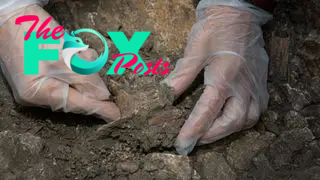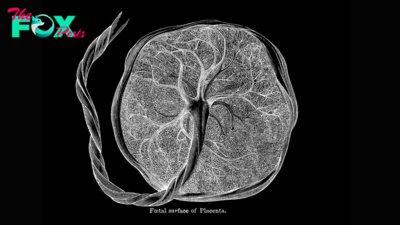Science
Science news this week: 'Thorin' the last Neanderthal and a 'smiley face' on Mars
Having a cursory glance at Science headlines this week, you could be forgiven for thinking that life is futile and that the existential dread that sometimes bubbles up is warranted. Whether it was the news of the "God of Chaos" asteroid potentially hitting Earth (albeit incredibly unlikely), the possible collapse of the Gulf Stream throwing tropical monsoons into chaos, or the "doomsday" fish that is supposedly a portent of earthquakes, things look bleak.
However, where there is darkness, there is light, and so we also learned of an amazing discovery that could revolutionize your gadgets, watched an ethereal "spaghetti monster" dance across the seafloor, and investigated a new tool to see how Healthy your gut microbiome is.
And don't forget to look up on Tuesday (Sept. 17), as the Harvest Supermoon will be shining bigger and brighter than normal. It's sure to be a sight to behold.
DNA of 'Thorin,' one of the last Neanderthals, finally sequenced

"Thorin," one of the last Neanderthals to walk the planet, was part of a previously unknown lineage that was isolated for 50,000 years, a new DNA analysis finds.
Discovered in 2015 at the entrance to the Grotte Mandrin rock shelter in the Rhône River valley of southern France, Thorin — nicknamed after a dwarf in J. R. R. Tolkien's "The Hobbit" — has sometimes been called the "last Neanderthal" because he may have lived as recently as 42,000 years ago, close to when our closest human relatives disappeared. Although only teeth and portions of the skull have been recovered so far, Thorin's genome was analyzed to better understand when and how Neanderthals disappeared.
"Our results suggest small group sizes and long-term genetic isolation of the Thorin population from other late Neanderthal populations with genetic data available," the researchers wrote in their study.
Discover more Archaeology news
-

 Science16h ago
Science16h agoPolaris Dawn Sets New Space Altitude Record—and There’s More to Come
-

 Science19h ago
Science19h agoChina plans to build moon base at the lunar south pole by 2035
-

 Science19h ago
Science19h ago'Space trash' will lead us to intelligent aliens, Harvard astrophysicist Avi Loeb says
-

 Science1d ago
Science1d agoSpace photo of the week: Space X's Polaris Dawn astronauts 'touch the void' on 1st-ever private spacewalk
-

 Science1d ago
Science1d ago'I have never written of a stranger organ': The rise of the placenta and how it helped make us human
-

 Science1d ago
Science1d agoThe moon might still have active volcanoes, China's Chang'e 5 sample-return probe reveals
-

 Science2d ago
Science2d agoSupercooling of Earth's inner core may finally reveal how old it is
-

 Science2d ago
Science2d agoSahara desert hit by extraordinary rainfall event that could mess with this year's hurricane season





















